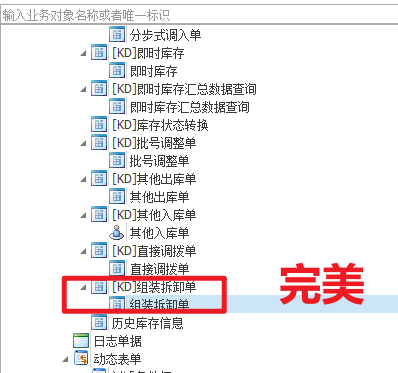5. 概述(General description)
5.1. Introduction
5.1. A low-rate wireless personal area network (LR-WPAN) is a simple, low-cost communication network that allows wireless connectivity in applications with limited power and relaxed throughput requirements. The main objectives of an LR-WPAN are ease of installation, reliable data transfer, extremely low cost, and a reasonable battery life, while maintaining a simple and flexible protocol.
低速率无线个域网(LR-WPAN)是一种简单、低成本的通信网络,允许在功率有限、吞吐量要求宽松的应用中进行无线连接。LR-WPAN的主要目标是易于安装、可靠的数据传输、极低的成本和合理的电池寿命,同时保持简单灵活的协议。
This standard defines multiple PHYs operating in a variety of frequency bands, as described in 10.1.
本标准定义了在各种频带中运行的多个PHY,如10.1所述。
Two different device types can participate in an IEEE 802.15.4 network: a full-function device (FFD) and a reduced-function device (RFD). An FFD is a device that is capable of serving as a personal area network (PAN) coordinator or a coordinator, as defined in 6.1. An RFD is a device that is not capable of serving as either a PAN coordinator or a coordinator. An RFD is intended for applications that are extremely simple, such as a light switch or a passive infrared sensor; it does not have the need to send large amounts of data and only associates with a single FFD at a time. Consequently, the RFD can be implemented using minimal resources and memory capacity.
两种不同的设备类型可以参与IEEE 802.15.4网络:全功能设备(FFD)和简化功能设备(RFD)。FFD是一种能够充当个人区域网络(PAN)协调器或协调器的设备,如6.1中所定义。RFD是一种既不能充当PAN协调器也不能充当协调器的设备。RFD适用于极其简单的应用,如电灯开关或被动红外传感器;它不需要发送大量数据,一次只与单个FFD相关联。因此,RFD可以使用最小的资源和存储容量来实现。
Supplemental information for various industrial domains is described in “Applications of IEEE Std 802.15.4” [B3]. 9
各种工业领域的补充信息在“IEEE Std 802.15.4的应用”[B3]中进行了描述。9
5.2. Special application spaces 特殊应用空间
5.2.1. General
Although this standard is intended to address many diverse application spaces, some application spaces have unique requirements which required specific elements to be added to this standard. These application spaces are described in this subclause.
尽管本标准旨在解决许多不同的应用空间,但一些应用空间有独特的要求,需要在本标准中添加特定的元素。本款对这些应用空间进行了描述。
5.2.2. Smart utility network 智能公用事业网络(SUN)
SUNs enable multiple applications to operate over shared network resources, providing monitoring and control of a utility system. SUN devices are designed to operate in very large-scale, low-power wireless applications and often require using the maximum transmit power available under applicable regulations, in order to provide long-range, point-to-point connections. Frequently, SUNs are required to cover geographically widespread areas containing a large number of outdoor devices. In these cases, SUN devices typically employ mesh or peer-to-peer multihop techniques to communicate with an access point.
SUNs使多个应用程序能够在共享网络资源上运行,提供对公用事业系统的监控和控制。SUN设备设计用于在非常大规模、低功耗的无线应用中运行,并且通常需要使用适用法规下可用的最大发射功率,以提供远程点对点连接。通常,SUNs需要覆盖地理上广泛的区域,其中包含大量的户外设备。在这些情况下,SUN设备通常采用网状或对等多跳技术与接入点通信。
5.2.3. Rail communications and control 铁路通信和控制(RCC)
RCC refers to a wireless information exchange and sensor or control communications deployed in applications such as the following:
RCC是指部署在以下应用中的无线信息交换和传感器或控制通信:
5.2.3. - A wireless link between trains, locomotives, or other mobile rolling stock to fixed trackside or network infrastructure5.2.3. 列车、机车或其他移动机车车辆与固定轨旁或网络基础设施之间的无线连接
-
A link between connected fixed, remote trackside infrastructure, and fixed network infrastructure
连接固定、远程轨旁基础设施和固定网络基础设施之间的链接 -
A link between vehicles in the same train or between two or more trains
同一列车上的车辆之间或两列或多列列车之间的连接
RCC devices are intended to support mobile rail vehicle communications at high speeds with data rates that enable connections at distances of over 50 km. The RCC PHYs are designed to take advantage of relatively small amounts of spectrum where spectrum is costly or scarce.
RCC设备旨在支持高速移动轨道车辆通信,其数据速率可实现50公里以上距离的连接。RCC PHY旨在利用频谱成本高昂或稀缺的相对少量的频谱。
5.2.4. Television white space 电视空白频段(TVWS)
TVWS operation has the requirement to determine which TVWS frequency allocations are available for use at a given time and geographic location. TVWS devices need to have access to TVWS channel availability information, for example, via a central database that is accessed over the Internet. A TVWS device that has no connection to the Internet must depend upon another TVWS device that has access to the TVWS database via the Internet to acquire channel availability information.
TVWS操作需要确定在给定时间和地理位置哪些TVWS频率分配可供使用。TVWS设备需要访问TVWS频道可用性信息,例如,通过互联网访问的中央数据库。没有连接到互联网的TVWS设备必须依赖于通过互联网访问TVWS数据库的另一个TVWS设备来获取频道可用性信息。
5.2.5. Radio frequency identification 射频识别(RFID)
Active RFID devices are used to identify and often locate people or objects in industrial or commercial environments. Typical applications include asset management, inventory management, process control and automation, safety, and accountability.
有源RFID设备用于识别并经常定位工业或商业环境中的人或物体。典型的应用包括资产管理、库存管理、过程控制和自动化、安全和问责制。
In its simplest form an active RFID system comprises a number of transmit-only tags that periodically transmit a packet containing a unique identifier (ID) and a small amount of data. The packet is received by one or more readers that may simply register the tag as present, may employ further processing to determine the location of the tag, or forward data to an application server. More complex active RFID systems might employ two-way communications with the tag for control, communication, and coordination.
在其最简单的形式中,有源RFID系统包括多个仅传输标签,这些标签定期传输包含唯一标识符(ID)和少量数据的数据包。数据包由一个或多个读取器接收,这些读取器可以简单地将标签注册为存在,可以采用进一步的处理来确定标签的位置,或者将数据转发给应用服务器。更复杂的有源RFID系统可能采用与标签的双向通信来进行控制、通信和协调。
5.2.6. Low-energy, critical infrastructure monitoring 低能耗关键基础设施监控 (LECIM)
The LECIM portions of this standard are designed to implement a minimal network infrastructure that enables the collection of scheduled and event data from a large number of non-mains powered end points that are widely dispersed, or are in challenging propagation environments. To facilitate low energy operation necessary for multi-year battery life, MAC protocols that minimize network maintenance traffic and device wake durations have been defined.
本标准的LECIM部分旨在实现最小的网络基础设施,该基础设施能够从广泛分散或处于具有挑战性的传播环境中的大量非市电供电端点收集计划和事件数据。为了促进多年电池寿命所需的低能耗运行,定义了最大限度地减少网络维护流量和设备唤醒持续时间的MAC协议。
5.2.7. Medical body area network (MBAN) services 医疗体域网服务
5.2.6. Some countries have allocated spectrum for MBAN services on a secondary basis such that MBAN devices are required to protect all primary users and accept possible interference from those users. MBAN devices operating within this allocated spectrum conform to a set of rules which restrict use of the band to only medical, non-voice use under direction of a healthcare practitioner, among other requirements. When a primary user is making use of a portion of the band, MBAN devices vacate that portion of the band. Use of the band by the primary user is, in general, scheduled well in advance, allowing MBAN users to share the band in an orderly manner.5.2.6. 一些国家在次要基础上为MBAN服务分配了频谱,因此要求MBAN设备保护所有主要用户并接受来自这些用户的可能干扰。在该分配的频谱内运行的MBAN设备符合一组规则,这些规则将频带的使用限制为在医疗从业者的指导下仅限于医疗、非语音使用,以及其他要求。当主要用户正在使用频带的一部分时,MBAN设备会腾出该部分频带。通常,主用户对频带的使用是提前安排好的,允许MBAN用户以有序的方式共享频带。
5.2.8. China medical band (CMB) 中国医疗频段
The Ministry of Industry and Information Technology (MIIT) of the People’s Republic of China has approved the 174–216 MHz, 407–425 MHz, and 608–630 MHz bands for medical information transmission.
中华人民共和国工业和信息化部(MIIT)已批准174-216 MHz、407-425 MHz和608-630 MHz频段用于医疗信息传输。5.2.7. 5.2.7. CMB devices operating within these bands conform to a set of rules specified in MIIT Doc 423-2005 [B13], which restricts use of the band to only medical, non-voice use under direction of a healthcare practitioner, among other requirements.
在这些频段内运行的CMB设备符合工信部文件423-2005[B13]中规定的一套规则,该规则将频段的使用限制在医疗从业者的指导下,仅限于医疗、非语音使用,以及其他要求。
This standard defines a PHY for devices operating on Chinese-approved bands for medical signals.
本标准定义了在中国批准的医疗信号频段上运行的设备的物理层。
5.3. Components of the IEEE 802.15.4 WPAN
A system conforming to this standard consists of several components. The most basic is the device. A device has a single radio interface that implements an IEEE Std 802.15.4 MAC and PHY. Two or more devices communicating on the same physical channel constitute a wireless personal area network (WPAN). A WPAN includes at least one FFD, operating as the PAN coordinator.
符合本标准的IEEE 802.15.4 WPAN系统的组件由几个组件组成。最基本的是设备。设备具有实现IEEE Std 802.15.4 MAC和PHY的单个无线电接口。在同一物理信道上通信的两个或多个设备构成无线个域网(WPAN)。WPAN包括至少一个FFD,作为PAN协调器运行。
5.4. Multi-PHY management (MPM) of the SUN WPAN, SUN WPAN的多PHY管理
Multiple, different SUN PHYs can operate in the same location and within the same frequency band. In order to mitigate interference, an MPM scheme is specified for SUNs to facilitate inter-PHY coexistence. For this purpose, the MPM scheme facilitates interoperability and negotiation among potential coordinators with different PHYs by permitting a potential coordinator to detect an operating network during its discovery phase using the common signaling mode (CSM) appropriate to the band being used. The MPM procedure can be used in conjunction with the clear channel assessment (CCA) mechanism to provide coexistence.
多个不同的SUN PHY可以在同一位置和同一频带内运行。为了减轻干扰,为SUNs指定了MPM方案,以促进PHY间的共存。 为此,MPM方案通过允许潜在协调器在发现阶段使用适合所使用频带的公共信令模式(CSM)检测操作网络,促进了具有不同PHY的潜在协调器之间的互操作性和协商。MPM程序可以与畅通信道评估(CCA)机制结合使用,以提供共存。
5.5. Network topologies
5.5.1. General
Depending on the application requirements, an IEEE 802.15.4 LR-WPAN operates in either of two topologies: the star topology or the peer-to-peer topology. Both are shown in Figure 5-1. 5.4. 根据应用要求,IEEE 802.15.4 LR-WPAN在两种拓扑中运行:星形拓扑或对等拓扑。两者如图5-1所示。
In the star topology, the communication is established between devices and a single central controller, called the PAN coordinator. A device typically has some associated application and is either the initiation point or the termination point for network communications. The PAN coordinator is the primary controller of the PAN. All devices operating on a network of either topology have unique addresses, referred to as extended addresses. In addition, a device can be assigned a short address during the association process. A device will use either the extended address or the short address for communication within the PAN. The transmission of the extended and short address fields is optional for reduced function device-transmit only (RFD-TX) devices. The PAN coordinator will often be mains powered, while the devices will likely be battery powered. Applications that benefit from a star topology include home automation, personal computer peripherals, games, and personal health care.
在星形拓扑中,通信是在设备和单个中央控制器(称为PAN协调器)之间建立的。设备通常具有一些相关的应用程序,并且是网络通信的起始点或终止点。PAN协调器是PAN的主要控制器。 在任一拓扑结构的网络上运行的所有设备都有唯一的地址,称为扩展地址。此外,在关联过程中,可以为设备分配一个短地址。设备将使用扩展地址或短地址在PAN内进行通信。扩展和短地址字段的传输对于仅限功能设备传输(RFD-TX)设备是可选的。PAN协调器通常由市电供电,而设备可能由电池供电。受益于星形拓扑的应用包括家庭自动化、个人电脑外围设备、游戏和个人医疗保健。

5.5. The peer-to-peer topology also has a PAN coordinator; however, it differs from the star topology in that any device is able to communicate with any other device as long as they are in range of one another. Peer-to-peer topology allows more complex network formations to be implemented, such as mesh networking topology.
对等拓扑还具有PAN协调器;然而,它与星形拓扑的不同之处在于,任何设备都能够与任何其他设备通信,只要它们在彼此的范围内。对等拓扑允许实现更复杂的网络结构,如网状网络拓扑。
5.5.1. Applications such as industrial control and monitoring, wireless sensor networks, asset and inventory tracking, intelligent agriculture, and security would benefit from such a network topology. A peer-to-peer network allows multiple hops to route messages from any device to any other device on the network. Such functions can be added at the higher layer, but they are not part of this standard.
工业控制和监控、无线传感器网络、资产和库存跟踪、智能农业和安全等应用将受益于这种网络拓扑。对等网络允许多跳将消息从任何设备路由到网络上的任何其他设备。这些功能可以在更高层添加,但它们不是本标准的一部分。
Each independent PAN selects a unique ID. This PAN ID allows communication between devices within a network using short addresses and enables transmissions between devices across independent networks. The mechanism by which identifiers are chosen is outside the scope of this standard.
每个独立的PAN选择一个唯一的ID。此PAN ID允许使用短地址在网络内的设备之间进行通信,并允许设备之间在独立网络上进行传输。选择标识符的机制不在本标准的范围内。
The network formation is performed by the higher layer, which is not part of this standard.
网络形成由更高层执行,这不是本标准的一部分。
5.5.2. Star network formation 星形网络的形成
The basic structure of a star network is illustrated in Figure 5-1. After an FFD is activated, it can establish its own network and become the PAN coordinator. All star networks operate independently from all other star networks currently in operation. This is achieved by choosing a PAN ID that is not currently used by any other network within the radio communications range. Once the PAN ID is chosen, the PAN coordinator allows other devices, potentially both FFDs and RFDs, to join its network. The higher layer can use the procedures described in 6.3 and 6.4 to form a star network. An reduced function device with receive-only capability (RFD-RX) can serve as a PAN coordinator termination point for RFD-TXs.
星形网络的基本结构如图5-1所示。激活FFD后,它可以建立自己的网络并成为PAN协调器。所有星形网络独立于当前正在运行的所有其他星形网络运行。这是通过选择当前未被无线电通信范围内的任何其他网络使用的PAN ID来实现的。一旦选择了PAN ID,PAN协调器就允许其他设备(可能是FFD和RFD)加入其网络。更高层可以使用6.3和6.4中描述的过程形成星形网络。具有仅接收能力的缩减功能设备(RFD-RX)可以作为RFD TX的PAN协调器端接点。
Timeslotted channel hopping (TSCH) PANs are topology independent and can be used in star topologies as well as partial or full mesh topologies.
时隙信道跳频(TSCH)PAN与拓扑无关,可用于星形拓扑以及部分或全网状拓扑。
LECIM networks primarily operate in a star topology. LECIM networks are typically asymmetric in energy supply and capability, having a PAN coordinator that is mains powered (or otherwise provided a substantial power source) and energy and/or cost constrained devices. The PAN coordinator typically monitors the channel more often than a device. A device may sleep unless it has a Data frame to send.
LECIM网络主要在星形拓扑中运行。LECIM网络在能量供应和能力方面通常是不对称的,具有由市电供电(或以其他方式提供大量电源)的PAN协调器以及能量和/或成本受限的设备。PAN协调器通常比设备更频繁地监视信道。除非有数据帧要发送,否则设备可能会休眠。
- LECIM low-energy, critical infrastructure monitoring 低能耗、关键基础设施监控
5.5.3. Peer-to-peer network formation 对等网络形成
In a peer-to-peer topology, each device is capable of communicating with any other device within its radio communications range. One device is nominated as the PAN coordinator, for instance, by virtue of being the first device to communicate on the channel. Further network structures are constructed out of the peer-to- peer topology, and it is possible to impose topological restrictions on the formation of the network.
在对等拓扑中,每个设备都能够与其无线电通信范围内的任何其他设备进行通信。例如,一个设备被指定为PAN协调器,因为它是第一个在信道上通信的设备。进一步的网络结构由对等拓扑构建,并且可以对网络的形成施加拓扑限制。
An example of the use of the peer-to-peer communications topology is the cluster tree. The cluster tree network is a special case of a peer-to-peer network in which most devices are FFDs. An RFD connects to a cluster tree network as a leaf device at the end of a branch because RFDs do not allow other devices to associate. Any FFD is able to act as a coordinator and provide synchronization services to other devices or other coordinators. Only one of these coordinators is the overall PAN coordinator, potentially because it has greater computational resources than any other device in the PAN. The PAN coordinator forms the first cluster by choosing an unused PAN ID and broadcasting beacon frames to neighboring devices. A contention resolution mechanism is required if two or more FFDs simultaneously attempt to establish themselves as PAN coordinators; however, such a mechanism is outside the scope of this standard. A candidate device receiving a beacon frame is able to request to join the network at the PAN coordinator. If the PAN coordinator permits the device to join, it adds the new device as a child device in its neighbor list.
使用对等通信拓扑的一个例子是集群树。簇树网络是对等网络的一种特殊情况,其中大多数设备都是FFD。RFD作为分支末端的叶子设备连接到簇树网络,因为RFD不允许其他设备关联。任何FFD都能够充当协调器,并向其他设备或其他协调器提供同步服务。这些协调器中只有一个是整个PAN协调器,这可能是因为它比PAN中的任何其他设备都有更大的计算资源。PAN协调器通过选择未使用的PAN ID并向相邻设备广播信标帧来形成第一簇。如果两个或多个FFD同时试图将自己确立为PAN协调员,则需要一个争用解决机制;然而,这种机制不在本标准的范围内。接收信标帧的候选设备能够在PAN协调器处请求加入网络。如果PAN协调器允许该设备加入,它会将新设备作为子设备添加到其邻居列表中。
Then the newly joined device adds the PAN coordinator as its parent in its neighbor list and begins transmitting periodic beacons; other candidate devices are able to then join the network at that device. If the original candidate device is not able to join the network at the PAN coordinator, it will search for another parent device. The detailed procedures describing how a PAN is started and how devices join a PAN are found in 6.3 and 6.4.
然后,新加入的设备将PAN协调器作为其父节点添加到其邻居列表中,并开始发送周期性信标;其他候选设备随后能够在该设备处加入网络。如果原始候选设备无法在PAN协调器处加入网络,它将搜索另一个父设备。描述PAN如何启动以及设备如何加入PAN的详细程序见6.3和6.4。
The simplest form of a cluster tree network is a single cluster network, but larger networks are possible by forming a mesh of multiple neighboring clusters. Once predetermined application or network requirements are met, the first PAN coordinator instructs a device to become the PAN coordinator of a new cluster adjacent to the first one. Other devices gradually connect and form a multicluster network structure, such as the one seen in Figure 5-2. The lines in Figure 5-2 represent the parent-child relationships of the devices and not the communication flow. The advantage of a multicluster structure is increased coverage area, while the disadvantage is an increase in message latency.
最简单的簇树网络形式是单簇网络,但通过形成多个相邻簇的网格,可以形成更大的网络。一旦满足预定的应用或网络要求,第一PAN协调器指示设备成为与第一个相邻的新集群的PAN协调器。其他设备逐渐连接并形成多集群网络结构,如图5-2所示。图5-2中的线条表示设备的父子关系,而不是通信流。多集群结构的优点是增加了覆盖区域,而缺点是增加了消息延迟。5.5.3.

A TVWS multichannel cluster tree PAN (TMCTP) is a form of cluster tree network where the super PAN coordinator (SPC) is the overall PAN coordinator that provides synchronization services to other PAN coordinators in the cluster. The SPC also has access to the geolocation database (GDB) server to provide TVWS channel availability information to other PAN coordinators. An example is shown in Figure 5-3. In the TMCTP, collisions between clusters can be reduced because each cluster uses its own channel; in addition, the coverage area is increased through the TMCTP parent-child structure. Each TMCTP-parent PAN coordinator, including the SPC, communicates with its TMCTP-child PAN coordinators during the contention access period (CAP) or contention-free period (CFP) of the TMCTP-parent PAN coordinator superframe. Each one also receives beacon frames of its TMCTP-child PAN coordinators on a dedicated channel during the dedicated beacon slots (DBS) assigned to them in the BOP, as shown with an asterisk (*) in Figure 5-3.
TVWS多信道簇树PAN(TMCTP)是簇树网络的一种形式,其中超级PAN协调器(SPC)是向簇中的其他PAN协调器提供同步服务的总体PAN协调器。SPC还可以访问地理定位数据库(GDB)服务器,向其他PAN协调员提供TVWS频道可用性信息。示例如图5-3所示。在TMCTP中,由于每个集群使用自己的通道,因此可以减少集群之间的冲突;此外,通过TMCTP父子结构增加了覆盖区域。在TMCTP父PAN协调器超帧的争用接入时段(CAP)或无争用时段(CFP)期间,包括SPC在内的每个TMCTP母PAN协调器与其TMCTP子PAN协调器通信。如图5-3中的星号(*)所示,在BOP中分配给它们的专用信标时隙(DBS)期间,每个人还可以在专用信道上接收其TMCTP子PAN协调器的信标帧。

5.6. Architecture
5.6.1. General 概述
The IEEE 802.15.4 architecture is defined in terms of a number of blocks in order to simplify the standard. These blocks are called layers. Each layer is responsible for one part of the standard and offers services to the higher layers.
IEEE 802.15.4架构根据多个块进行定义,以简化标准。 这些块称为层。每一层负责标准的一部分,并向更高层提供服务。
The interfaces between the layers serve to define the logical links that are described in this standard.
层之间的接口用于定义本标准中描述的逻辑链接。
An LR-WPAN device contains at least one PHY, which contains the radio frequency (RF) transceiver along with its low-level control mechanism, and a MAC sublayer that provides access to the physical channel for all types of transfer. Figure 5-4 shows these blocks in a graphical representation.
LR-WPAN设备包含至少一个PHY,其中包含射频(RF)收发器及其低级控制机制,以及一个MAC子层,该子层为所有类型的传输提供对物理信道的访问。图5-4以图形表示方式显示了这些块。

The next higher layers, shown in Figure 5-4, consist of a network layer, which provides network configuration, manipulation, and message routing, and an application layer, which provides the intended function of the device. The definition of these layers is outside the scope of this standard.
如图5-4所示,下一个更高层由网络层和应用层组成,网络层提供网络配置、操作和消息路由,应用层提供设备的预期功能。这些层的定义不在本标准的范围内。5.6.1.
5.6.2. PHY
The features of the PHY are activation and deactivation of the radio transceiver, energy detection (ED), link quality indication (LQI), channel selection, CCA, ranging and transmitting as well as receiving packets across the physical medium. The high rate pulse repetition frequency (HRP) ultra-wide band (UWB) PHY also has the feature of precision ranging.
PHY的特征是无线电收发器的激活和去激活、能量检测(ED)、链路质量指示(LQI)、信道选择、CCA、测距以及通过物理介质发送和接收数据包。高速率脉冲重复频率(HRP)超宽带(UWB)物理层也具有精确测距的特点。
Coexistence with other wireless standards has been analyzed for the PHYs defined in this standard. These analyses can be found in the following documents:
已经分析了本标准中定义的PHY与其他无线标准的共存性。这些分析可以在以下文件中找到:
-
For the offset quadrature phase-shift keying (O-QPSK) PHY, binary phase-shift keying (BPSK) PHY, CSSS PHY, HRP UWB PHY, and Gaussian frequency-shift keying (GFSK) PHY: “Coexistence analysis of IEEE Std 802.15.4 with other IEEE standards and proposed standards” [B5].
对于偏移正交相移键控(O-QPSK)PHY、二进制相移键动(BPSK)PHY、CSSS PHY、HRP UWB PHY和高斯频移键控的PHY: “IEEE Std 802.15.4与其他IEEE标准和拟议标准的共存分析” [B5]。[B5] “Coexistence analysis of IEEE Std 802.15.4 with other IEEE standards and proposed standards,” IEEE
802.15 document 15-10-0808-00-0000, 2010. -
For the minimum shift keying (MSK) PHY, with the exception of the 2000 kb/s data rate, and the low rate pulse repetition frequency (LRP) UWB PHY: “TG4f Coexistence Assurance Document” [B21].
对于最小频移键控(MSK)PHY,除2000kb/s数据速率和低速率脉冲重复频率(LRP)UWB PHY外:“TG4f共存保证文件” [B21]。[B21] “TG4f Coexistence Assurance Document,” IEEE 802.15 document 15-10-0918-01-004f, 2010.5.6.2.
-
For the MSK PHY using the 2000 kb/s data rate: “Coexistence Assurance Document for 802.15.4t” [B6].
对于使用2000 kb/s数据速率的MSK PHY:“802.15.4t共存保证文件” [B6]。[B6] “Coexistence Assurance Document for 802.15.4t,” IEEE 802.15 document 15-16-00408-01-004t.
-
For TVWS-FSK PHY, TVWS-OFDM PHY, and TVWS-NB-OFDM PHY: Chang and Seibert [B4].
对于TVWS-FSK PHY、TVWS-OFDM PHY和TVWS-NB-OFDM PHY:Chang和Seibert[B4]。[B4] Chang, S.-Y., and C. Seibert, IEEE 802.15 document 15-13-0166-03-004m, 2013.
-
For ternary amplitude shift keying (TASK) PHY and RS-GFSK PHY: Nair et al. [B14].
对于三元幅移键控(TASK)PHY和RS-GFSK PHY:Nair等人[B14]。[B14] Nair, J. P., C. Thejaswi, K. Bynam, and H. de Ruijter, IEEE 802.15 document 15-14-0709-00-004q, 2014. 19
5.6.3. MAC sublayer MAC子层
The MAC sublayer provides two services: the MAC data service and the MAC management service interfacing to the MAC sublayer management entity (MLME) service access point (SAP) (known as MLME-SAP). The MAC data service enables the transmission and reception of MAC protocol data units (MPDUs) across the PHY data service.
MAC子层提供两种服务:MAC数据服务和与MAC子层管理实体(MLME)服务接入点(SAP)(称为MLME-SAP)接口的MAC管理服务。MAC数据服务使得能够跨PHY数据服务发送和接收MAC协议数据单元(MPDU)。
The features of the MAC sublayer are beacon management, channel access, guaranteed timeslot (GTS) management, frame validation, acknowledged frame delivery, association, and disassociation. In addition, the MAC sublayer provides hooks for implementing application-appropriate security mechanisms.
MAC子层的特征是信标管理、信道接入、保证时隙(GTS)管理、帧验证、确认帧传递、关联和解除关联。此外,MAC子层提供钩子,用于实现适用于应用程序的安全机制。
5.7. Functional overview 功能概述
5.7.1. Superframe structure 超帧结构
5.7.1.1. Beacon superframe 信标超帧
The format of the superframe is defined by the coordinator. The superframe is bounded by beacons (either Beacon frames or Enhanced Beacon frames) sent by the coordinator. Optionally, the superframe can have an active and an inactive portion. During the inactive portion, the coordinator is able to enter a low-power mode. The beacon frame transmission starts at the beginning of the first slot of each superframe. If a coordinator does not wish to use a superframe structure, it will turn off the beacon transmissions. The beacons are used to synchronize the attached devices, to identify the PAN, and to describe the structure of the superframes.
超帧的格式由协调器定义。超帧由协调器发送的信标(信标帧或增强信标帧)界定。可选地,超帧可以具有活动部分和非活动部分。在非活动部分期间,协调器能够进入低功率模式。信标帧传输在每个超帧的第一个时隙的开始处开始。如果协调器不希望使用超帧结构,它将关闭信标传输。信标用于同步连接的设备,识别PAN,并描述超帧的结构。5.6.3.
The period between two beacons where devices can randomly access the medium is defined as CAP. Any device wishing to communicate during the CAP between two beacons competes with other devices using a slotted carrier sense multiple access with collision avoidance (CSMA-CA) or ALOHA mechanism, as appropriate.
设备可以随机访问介质的两个信标之间的时间段被定义为CAP。任何希望在CAP期间在两个信标之间进行通信的设备都会使用具有冲突避免的时隙载波侦听多址(CSMA-CA)或ALOHA机制(视情况而定)与其他设备竞争。
For low-latency applications or applications requiring specific data bandwidth, the PAN coordinator dedicates portions of the active superframe to that application. These portions are called GTSs. The GTSs form the CFP, which always appears at the end of the active superframe starting at a slot boundary immediately following the CAP. The PAN coordinator allocates up to seven of these GTSs, and a GTS is allowed to occupy more than one slot period.
对于低延迟应用或需要特定数据带宽的应用,PAN协调器将活动超帧的部分专用于该应用。这些部分被称为GTS。 GTS形成CFP,CFP总是出现在活动超帧的末尾,从紧随CAP之后的时隙边界开始。PAN协调器最多分配七个GTS,并且允许一个GTS占用多个时隙。
- CFP contention-free period; 无争用期
- GTS guaranteed timeslot; 保证时间段
However, a sufficient portion of the CAP remains for contention-based access of other networked devices or new devices wishing to join the network. All contention-based transactions are completed before the CFP begins. Also each device transmitting in a GTS ensures that its transaction is complete before the time of the next GTS or the end of the CFP. More information on the superframe structure can be found in 6.2.1.5.7. 然而,CAP中仍有足够的部分用于其他网络设备或希望加入网络的新设备的基于竞争的访问。所有基于竞争的事务都在CFP开始之前完成。此外,在GTS中传输的每个设备都确保其交易在下一个GTS或CFP结束之前完成。有关超帧结构的更多信息,请参阅6.2.1。
5.7.1.2. DSME多超帧结
DSME(Deterministic and Synchronous Multichannel Extension)是一种用于无线个域网(WPAN)的协议扩展,特别是在IEEE 802.15.4标准中。它旨在提高网络的可靠性和吞吐量,通过引入多信道操作和确定性调度机制来实现。DSME多超帧结构是DSME协议中的一个关键组成部分,它定义了网络中的时间分配和信道使用方式。
DSME多超帧结构通过引入增强型信标帧、CAP和CFP,以及信道多样性方法,为无线个域网提供了一种高效、可靠的数据传输机制。这种结构特别适用于需要高可靠性和低延迟的应用场景,如工业自动化、智能家居和医疗监测等领域。
DSME多超帧结构概述
在DSME启用的个人区域网络(PAN)中,多超帧结构由协调器(Coordinator)通过定期发送带有DSME PAN描述符信息元素的增强型信标帧(Enhanced Beacon frame)来定义。每个多超帧周期性地重复,由多个超帧组成,每个超帧又包含三个部分:
- 增强型信标帧(Enhanced Beacon frame):在公共信道上发送,用于同步网络中的设备,并携带网络参数和调度信息。
- 竞争访问期(CAP, Contention Access Period):在公共信道上,设备通过竞争访问机制发送数据帧。CAP主要用于那些不需要严格时间同步或低优先级的数据传输。
- 无竞争访问期(CFP, Contention-Free Period):在CFP期间,设备根据事先分配的保证时隙(GTS, Guaranteed Time Slots)在指定的信道上发送数据帧。CFP用于需要高可靠性和低延迟的数据传输,如实时音视频流。
信道多样性
在CFP期间,DSME使用信道多样性方法来传输数据帧和确认帧,以提高网络的可靠性和抗干扰能力。信道多样性可以通过两种方式实现:
- 信道适应(Channel Adaptation):根据当前的网络条件(如干扰水平、信道质量)动态选择最优信道进行传输。
- 信道跳变(Channel Hopping):按照预定的跳变序列在不同的信道上传输数据,以减少干扰和增加网络的鲁棒性。
DSME GTS分配
DSME GTS是在CFP期间为特定设备分配的保证时隙,可以在当前ChannelPage中的任何可用信道上分配。通过GTS分配,设备可以在无竞争的环境下发送数据,从而提高数据传输的可靠性和效率。
关于DSME多超帧结构的详细信息,请参见6.11.2。5.11.1.1.

5.7.1.3. Slotframes
In a TSCH PAN, the concept of the superframe is replaced with a slotframe. The slotframe also contains defined periods of communications between peers that are either CSMA-CA or guaranteed, but the slotframe automatically repeats based on the participating devices’ shared notion of time. Unlike the superframe, slotframes and a device’s assigned timeslot(s) within the slotframe can be initially communicated by beacon, but are typically configured by a higher layer as the device joins the network.
在TSCH PAN中,超帧的概念被时隙帧所取代。时隙帧还包含CSMA-CA或保证的对等体之间定义的通信周期,但时隙帧会根据参与设备的共享时间概念自动重复。与超帧不同,时隙帧和时隙帧内设备分配的时隙最初可以通过信标进行通信,但通常在设备加入网络时由更高层配置。
Because all devices share common time and channel information, devices hop over the entire channel space to minimize the negative effects of multipath fading and interference and do so in a slotted way to avoid collisions, minimizing the need for retransmissions. Both of these features are desirable for operation in a harsh industrial environment.
由于所有设备共享共同的时间和信道信息,设备在整个信道空间上跳跃,以尽量减少多径衰落和干扰的负面影响,并以时隙方式这样做,以避免冲突,从而最大限度地减少重传的需要。这两个特征对于在恶劣的工业环境中操作都是理想的。
5.7.1.4. TMCTP superframe
TVWS allows the optional use of a superframe structure in a TMCTP that is extended by the addition of a beacon only period (BOP) to the active portion of the superframe. The format of the TMCTP superframe is defined by the SPC which sends an enhanced beacon containing a TMCTP Specification IE, as in 7.4.4.28. The TMCTP superframe is bounded by beacons sent by the SPC. The active portion of the TMCTP superframe is composed of a beacon, a CAP, a CFP, and a BOP. An example of a TMCTP superframe including a BOP is illustrated in Figure 5-6. The BOP is composed of one or more DBSs. A DBS is used to communicate beacons between a TMCTP-parent PAN coordinator and one of its TMCTP-child PAN coordinator(s). More information on the TMCTP superframe structure can be found in 6.2.8.
TVWS允许在TMCTP中可选地使用超帧结构,该超帧结构通过向超帧的活动部分添加仅信标时段(BOP)而扩展。TMCTP超帧的格式由SPC定义,SPC发送包含TMCTP规范IE的增强信标,如7.4.4.28所示。TMCTP超帧由SPC发送的信标界定。TMCTP超框的活动部分由信标、CAP、CFP和BOP组成。图5-6显示了包括BOP的TMCTP超框架的示例。BOP由一个或多个DBS组成。DBS用于在TMCTP父PAN协调器与其TMCTP子PAN协调器之一之间传输信标。有关TMCTP超帧结构的更多信息,请参阅6.2.8。

5.7.2. Data transfer model
5.7.2.1. Types of data transfer models
The data transfer models used in this standard are as follows:
本标准中使用的数据传输模型如下:
- Transfer to a coordinator in which a device transmits the data
设备往到协调器传输数据5.7.1.3. - Transfer from a coordinator in which the device receives the data
从设备从协调器接收数据 - Transfer between two peer devices
两个对等设备之间的传输
If a frame that is correctly received requests an acknowledgment, the device that received the frame will respond with one of the acknowledgment (Ack) frames: immediate acknowledgment (Imm-Ack), enhanced acknowledgment (Enh-Ack), or fragment acknowledgment (Frak), depending on the state of the network and the version number of the frame that was received.
如果正确接收的帧请求确认,则接收该帧的设备将根据网络状态和接收到的帧的版本号,用确认(Ack)帧之一进行响应:立即确认(Imm-Ack)、增强确认(Enh-Ack)或片段确认(Frak)。
5.7.2.2. Data transfer to a coordinator
When a device wishes to transfer data to a coordinator in a beacon-enabled PAN, it first listens for the beacon. When the beacon is found, the device synchronizes to the superframe structure. At the appropriate time, the device transmits its Data frame to the coordinator. When a device wishes to transfer data in a nonbeacon-enabled PAN, it just transmits its Data frame to the coordinator.
当设备希望将数据传输到启用信标的PAN中的协调器时,它首先会监听信标。当发现信标时,设备与超帧结构同步。在适当的时候,设备将其数据帧传输到协调器。当一个设备希望在一个不支持行动显示的PAN中传输数据时,它只需将其数据帧传输到协调器。
5.7.2.3. Data transfer from a coordinator
5.7.2. When the coordinator wishes to transfer data to a device in a beacon-enabled PAN, it indicates in the beacon, as defined in 7.3.1.6, that the data message is pending. The device periodically listens to the beacon and, if a message is pending, transmits a Data Request command. The pending Data frame is then sent by the coordinator. Upon successful completion of the data transaction, the message is removed from the list of pending messages in the beacon.
当协调器希望将数据传输到启用信标的PAN中的设备时,它会在信标中指示数据消息处于挂起状态,如7.3.1.6所述。该设备定期监听信标,如果消息待定,则发送数据请求命令。然后,协调器发送待处理的数据帧。数据事务成功完成后,该消息将从信标中的待处理消息列表中删除。
5.7.2.1. When a coordinator wishes to transfer data to a device in a nonbeacon-enabled PAN, it stores the data for the appropriate device to make contact and request the data. A device requests data by transmitting a Data Request command to its coordinator. If a Data frame is pending, the coordinator transmits the Data frame. If a Data frame is not pending, the coordinator indicates this fact either in the Ack frame following the Data Request command, if an acknowledgment was requested, or in a Data frame with a zero-length payload, as defined in 6.7.3.
当协调器希望将数据传输到未启用行动显示的PAN中的设备时,它会存储数据,以便相应的设备进行联系并请求数据。设备通过向其协调器发送数据请求命令来请求数据。如果数据帧处于挂起状态,则协调器会发送该数据帧。如果数据帧没有挂起,协调器会在数据请求命令后的确认帧中(如果请求了确认)或在6.7.3中定义的具有零长度有效载荷的数据帧中指示这一事实。
5.7.2.4. Peer-to-peer data transfers 点对点数据传输
For peer-to-peer transfers, a target device will either receive constantly or synchronize with the originator device. In the former case, the originator device attempts to transmit the data when it gains access to the channel. In the latter case, other measures need to be taken in order to achieve synchronization. Such measures are beyond the scope of this standard.
对于点对点传输,目标设备将持续接收或与发起设备同步。在前一种情况下,发起方设备在接入信道时尝试传输数据。在后一种情况下,需要采取其他措施来实现同步。这些措施超出了本标准的范围。
5.7.3. Frame structure
The frame structures have been designed to keep the complexity to a minimum while at the same time making them sufficiently robust for transmission on a noisy channel.
帧结构被设计为将复杂性保持在最低限度,同时使其在噪声信道上的传输具有足够的鲁棒性。
The MAC frames are passed to the PHY as the PSDU, which becomes the PHY payload. The PHY protocol data unit (PPDU) is illustrated in Figure 5-7.
MAC帧作为PSDU传递给PHY,PSDU成为PHY有效载荷。PHY协议数据单元(PPDU)如图5-7所示。5.7.2.2.

The format of the SHR and PHR is defined for each of the PHYs in their respective clause.
SHR和PHR的格式在各自的条款中为每个PHY定义。
5.7.2.3. The MHR and MFR are defined in 7.2.
MHR和MFR的定义见7.2。
5.7.4. Information element (IEs)
This standard makes use of IEs to transfer formatted data between layers and between devices. IEs consist of an identification, a length, and the IE content. Devices can accept or discard a particular element if the ID is known, and skip over unknown ID elements.
该标准利用IE在层之间和设备之间传输格式化数据。IE由标识、长度和IE内容组成。如果ID已知,设备可以接受或丢弃特定元素,并跳过未知的ID元素。
5.7.5. Access methods5.7.2.4.
5.7.5.1. Overview
The access methods defined in this standard are as follows:
本标准中定义的访问方法如下:
5.7.3. - Unslotted CSMA-CA used in nonbeacon-enabled PANs, as described in 6.2.5.1
如6.2.5.1所述,在未启用反作用的PAN中使用的无槽CSMA-CA
-
Slotted CSMA-CA used in beacon-enabled PANs, as described in 6.2.5.1
如6.2.5.1所述,在启用信标的PAN中使用的时隙CSMA-CA -
TSCH CCA used in non-shared slots in a TSCH PAN, as described in 6.2.5.2
TSCH CCA用于TSCH PAN中的非共享插槽,如6.2.5.2所述 -
TSCH CSMA-CA used for shared slots in a TSCH PAN, as described in 6.2.5.3
TSCH CSMA-CA用于TSCH PAN中的共享时隙,如6.2.5.3所述 -
CSMA-CA with priority channel access (PCA) for critical events, as described in 6.2.5.4
如6.2.5.4所述,CSMA-CA具有关键事件的优先信道接入(PCA)功能 -
LECIM ALOHA with PCA, as defined in 6.2.5.5
LECIM ALOHA与PCA,如6.2.5.5所定义5.7.4.
5.7.5.2. Frame acknowledgment
A successful reception and validation of a frame is optionally confirmed with an acknowledgment, as described in 6.7.4.
如6.7.4所述,帧的成功接收和验证可以通过确认来确认。
5.7.5. The receiving device can insert additional content in an Enh-Ack frame encapsulated as IEs. If the originator does not understand the IE content of the Enh-Ack frame, it is ignored, but the transmission is considered successful.
接收设备可以在封装为IE的Enh-Ack帧中插入额外内容。如果发起者不理解Enh-Ack帧的IE内容,则忽略该内容,但传输被视为成功。
5.7.5.1. If the originator does not receive an acknowledgment after some period, it assumes that the transmission was unsuccessful and retries the frame transmission. If an acknowledgment is still not received after several retries, the originator can choose either to terminate the transaction or to try again. When the acknowledgment is not required, the originator assumes the transmission was successful.
如果发起者在一段时间后没有收到确认,则认为传输不成功,并重试帧传输。如果多次重试后仍未收到确认,发起人可以选择终止交易或重试。当不需要确认时,发起者假设传输成功。
5.7.5.3. Frak
The Frak is used during the fragment sequence transfer to determine which fragments have been received successfully and which fragments need to be retransmitted. A Frak includes the status of one or more fragments. The format of the Frak is given in 22.3.7.3.
Frak在片段序列传输期间用于确定哪些片段已被成功接收,哪些片段需要重新传输。Frak包括一个或多个片段的状态。Frak的格式见22.3.7.3。
5.7.5.4. Data verification
A cyclic redundancy check (CRC) is used to detect errors in every PSDU, as defined in 7.2.11. To accommodate individual fragment acknowledgments, a fragment integrity check sequence (FICS) is included with each fragment. The recipient uses the FICS and fragment number to determine which fragments of the sequence have been received correctly and which are missing. The FICS is described in 22.3.4.
循环冗余校验(CRC)用于检测每个PSDU中的错误,如7.2.11中所定义。为了容纳单个片段确认,每个片段都包含一个片段完整性检查序列(FICS)。接收者使用FICS和片段号来确定序列的哪些片段被正确接收,哪些片段丢失。FICS在22.3.4中进行了描述。
5.7.6. Power consumption considerations 功耗考虑因素
5.7.6.1. General
In many applications that use this standard, devices will be battery powered, and battery replacement or recharging in relatively short intervals is impractical. Therefore, the power consumption is of significant concern. This standard was developed for devices with limited power supply availability in mind. However, the physical implementation of this standard may require additional power management considerations that are beyond the scope of this standard.
在许多使用此标准的应用中,设备将由电池供电,在相对较短的时间间隔内更换或充电电池是不切实际的。因此,功耗是一个值得关注的问题。本标准是为电源可用性有限的设备制定的。然而,本标准的物理实现可能需要额外的电源管理考虑,这超出了本标准的范围。
The protocol has been developed to favor battery-powered devices. However, in certain applications, some of these devices could potentially be mains powered. Battery-powered devices will require duty-cycling to reduce power consumption. These devices will spend most of their operational life in a sleep state; however, each device periodically listens to the RF channel in order to determine whether a message is pending. This mechanism allows the application designer to decide on the balance between battery consumption and message latency. Continuously powered devices have the option of listening to the RF channel continuously. In addition to the power-saving features of the LR-WPAN system, the HRP UWB PHY also provides a hybrid modulation that enables very simple, noncoherent receiver architectures to further reduce power consumption and implementation complexity.
该协议的开发是为了支持电池供电的设备。然而,在某些应用中,其中一些设备可能由市电供电。电池供电的设备将需要循环工作以降低功耗。这些设备将在睡眠状态下度过其大部分使用寿命;然而,每个设备定期监听RF信道,以确定消息是否未决。此机制允许应用程序设计者决定电池消耗和消息延迟之间的平衡。连续供电设备可以选择连续收听RF信道。除了LR-WPAN系统的节能特性外,HRP-UWB PHY还提供了一种混合调制,使非常简单的非相干接收机架构能够进一步降低功耗和实现复杂性。
5.7.6.2. Low-energy mechanisms5.7.5.2.
Low-energy mechanisms, coordinated sampled listening (CSL), as defined in 6.12.2, and receiver initiated transmission (RIT), as described in 6.12.3, are provided to further reduce energy consumption by allowing devices to communicate while maintaining low duty cycles.
提供了6.12.2中定义的低能量机制、协调采样监听(CSL)和6.12.3中描述的接收器发起传输(RIT),以通过允许设备在保持低占空比的同时进行通信来进一步降低能耗。
CSL allows receiving devices to periodically sample the channel(s) for incoming transmissions at low duty cycles. The receiving device and the transmitting device are coordinated to reduce transmitting overhead. RIT allows receiving devices to periodically broadcast data request frames, and transmitting devices only transmit to a receiving device upon receiving a data request frame. RIT is suitable for the following application scenarios:
CSL允许接收设备以低占空比定期对信道进行采样,以检测传入传输。接收设备和发射设备被协调以减少发射开销。RIT允许接收设备定期广播数据请求帧,并且发送设备仅在接收到数据请求帧时才向接收设备发送。RIT适用于以下应用场景:
-
Low data traffic rate and loose latency requirement, where a few seconds of latency is allowable by application.
低数据流量率和宽松的延迟要求,应用程序允许几秒钟的延迟。 -
Local regulations restricting the duration of continuous radio transmissions.
限制连续无线电传输持续时间的地方法规。
5.7.7. Security
From a security perspective, wireless ad hoc networks are no different from any other wireless network. They are vulnerable to passive eavesdropping attacks and active tampering because physical access to the wire is not required to participate in communications. The very nature of ad hoc networks and their cost objectives impose additional security constraints, which perhaps make these networks the most difficult environments to secure. Devices are low-cost and have limited capabilities in terms of computing power, available storage, and power drain; and it cannot always be assumed they have a trusted computing base nor a high-quality random number generator aboard. Communications cannot rely on the online availability of a fixed infrastructure and might involve short-term relationships between devices that never have communicated before. These constraints severely limit the choice of cryptographic algorithms and protocols and influence the design of the security architecture because the establishment and maintenance of trust relationships between devices need to be addressed with care. Most of these security architectural elements can be implemented at higher layers and, therefore, are outside the scope of this standard.
从安全角度来看,无线自组网与其他任何无线网络没有什么不同。它们容易受到被动窃听攻击和主动篡改,因为参与通信不需要物理访问线路。自组网的性质及其成本目标带来了额外的安全限制,这可能使这些网络成为最难保护的环境。设备成本低,在计算能力、可用存储和功耗方面能力有限;并且不能总是假设他们有可信的计算基础,也不能总是假设船上有高质量的随机数生成器。通信不能依赖于固定基础设施的在线可用性,可能涉及以前从未通信过的设备之间的短期关系。这些约束严重限制了加密算法和协议的选择,并影响了安全架构的设计,因为需要谨慎处理设备之间信任关系的建立和维护。这些安全架构元素中的大多数可以在更高层实现,因此不在本标准的范围内。
The cryptographic mechanism in this standard is based on symmetric-key cryptography and uses keys that are provided by higher layer processes. The establishment and maintenance of these keys are outside the scope of this standard. The mechanism assumes a secure implementation of cryptographic operations and secure and authentic storage of keying material.
本标准中的加密机制基于对称密钥加密,并使用由更高层进程提供的密钥。这些密钥的建立和维护不在本标准的范围内。该机制假设加密操作的安全实现以及密钥材料的安全和真实存储。
The cryptographic mechanism provides particular combinations of the following security services:
加密机制提供以下安全服务的特定组合:
-
Data confidentiality: Assurance that transmitted information is disclosed only to parties for whom it is intended.
-数据保密性:保证传输的信息仅向其预期的各方披露。 -
Data authenticity: Assurance of the source of transmitted information (and, hereby, that information was not modified in transit).
-数据真实性:保证传输信息的来源(并在此保证信息在传输过程中未被修改)。 -
Replay protection: Assurance that duplicate information is detected.
-重播保护:确保检测到重复信息。
The actual frame protection provided can be adapted on a frame-by-frame basis and allows for varying levels of data authenticity (to minimize security overhead in transmitted frames where required) and for optional data confidentiality.
所提供的实际帧保护可以逐帧进行调整,并允许不同级别的数据真实性(在需要时尽量减少传输帧中的安全开销)和可选的数据机密性。
Cryptographic frame protection uses either a key shared between two peer devices (link key) or a key shared among a group of devices (group key), thus allowing some flexibility and application-specific tradeoffs between key storage and key maintenance costs versus the cryptographic protection provided. If a group key is used for peer-to-peer communication, protection is provided only against outsider devices and not against potential malicious devices in the key-sharing group.
加密帧保护使用在两个对等设备之间共享的密钥(链接密钥)或在一组设备之间共享密钥(组密钥),从而允许在密钥存储和密钥维护成本与提供的加密保护之间进行一些灵活性和特定于应用程序的权衡。如果组密钥用于对等通信,则仅针对外部设备提供保护,而不针对密钥共享组中的潜在恶意设备提供保护。
Implementations should include mechanisms to prevent unauthorized access to locally stored keys. For more detailed information on the cryptographic security mechanisms used for protected MAC frames following this standard, refer to Clause 9.
实现应包括防止未经授权访问本地存储密钥的机制。有关遵循本标准用于受保护MAC帧的加密安全机制的更多详细信息,请参阅第9条。
5.7.8. Enabling spectrum resource measurement capability 启用频谱资源测量功能
Spectrum resource measurement (SRM) enables devices to gather a variety of data for evaluating radio link performance, which contributes to the selection of the best available PAN for joining and efficient radio spectrum usage for the selected PAN. As shown in Figure 5-8, the device obtains radio link characteristics by local measurements or via exchange of information with other devices via reporting messages all the way to the PAN coordinator. The PAN coordinator is also able to disseminate information to the devices in the PAN, such as the maximum transmit power, by which the receiving devices can set their radio parameters in a unified manner. SRM data is also made available to the upper protocol layers, which is able to use it for controlling the lower layer or their applications.
频谱资源测量(SRM)使设备能够收集各种数据来评估无线电链路性能,这有助于选择最佳的可用PAN进行加入,并为所选PAN高效使用无线电频谱。如图5-8所示,该设备通过本地测量或通过向PAN协调器报告消息与其他设备交换信息来获得无线电链路特性。PAN协调器还能够向PAN中的设备传播信息,例如最大发射功率,通过该功率,接收设备可以统一设置其无线电参数。SRM数据也可供上层协议层使用,上层协议层能够使用它来控制下层或其应用程序。

The measurement of SRM metrics are conducted only when the device is capable of doing it. In the case of low energy (LE) transmission and reception, for example, even if the requesting device requests the peer device to measure SRM metrics for a specific duration of time, the requested device can do it only when the receiver is enabled.
SRM度量的测量仅在设备能够进行时进行。例如,在低能量(LE)传输和接收的情况下,即使请求设备请求对等设备在特定时间段内测量SRM度量,被请求的设备也只能在接收器启用时进行。5.7.7.
In the case of TSCH, there are three modes of measurement operation:
对于TSCH,有三种测量操作模式:
-
Full measurement: The device conducts the measurement for a specified duration of time following the channel sequence as necessary.
-全测量:设备根据需要按照信道序列在指定的持续时间内进行测量。 -
Channel-specific measurement: The device conducts the measurement only when it is on the specified channel within the hopping sequence. The device puts the measured data together and calculates the performance metrics. The obtained result is the characteristics of the specified channel.
-信道特定测量:设备仅在跳频序列中的指定信道上进行测量。该设备将测量的数据放在一起并计算性能指标。获得的结果是指定信道的特征。 -
Link-specific measurement: The device conducts the measurement only when it is on a specific link, which is represented by macLinkHandle defined in Table 8-98. The device puts the measure data together and calculates the performance metrics. The obtained result is the characteristics of the specified link.
-链路特定测量:设备仅在特定链路上进行测量,如表8-98中定义的macLinkHandle所示。该设备将测量数据放在一起并计算性能指标。获得的结果是指定链接的特征。
5.8. Concept of primitives 图元概念
The services of a layer are the capabilities it offers to the user in the next higher layer or sublayer by building its functions on the services of the next lower layer. This concept is illustrated in Figure 5-9, showing the service hierarchy and the relationship of the two correspondent users and their associated layer (or sublayer) peer protocol entities.
一层的服务是它通过在下一个较低层的服务上构建其功能,在下一层或子层中为用户提供的功能。图5-9展示了这一概念,显示了服务层次结构以及两个通信用户及其相关层(或子层)对等协议实体之间的关系。

The services are specified by describing the information flow between the N-user and the N-layer. This information flow is modeled by discrete, instantaneous events, which characterize the provision of a service. Each event consists of passing a service primitive from one layer to the other through a layer SAP associated with an N-user. Service primitives convey the required information by providing a particular service. These service primitives are an abstraction because they specify only the provided service rather than the means by which it is provided. This definition is independent of any other interface implementation.
通过描述N用户和N层之间的信息流来指定服务。这种信息流由离散的瞬时事件建模,这些事件表征了服务的提供。每个事件都包括通过与N个用户关联的SAP层将服务原语从一个层传递到另一个层。服务原语通过提供特定服务来传达所需的信息。这些服务原语是一种抽象,因为它们只指定提供的服务,而不是提供服务的方式。此定义独立于任何其他接口实现。
A service is specified by describing the service primitives and parameters that characterize it.
通过描述服务原语和表征它的参数来指定服务。
A primitive can be one of four generic types:
基元可以是四种泛型类型之一:
-
Request: The request primitive is used to request that a service is initiated.5.7.8. Request:请求原语用于请求启动服务。
-
Indication: The indication primitive is used to indicate to the user an internal event.
指示:指示原语用于向用户指示内部事件。 -
Response: The response primitive is used to complete a procedure previously invoked by an indication primitive.
响应:响应原语用于完成之前由指示原语调用的过程。 -
Confirm: The confirm primitive is used to convey the results of one or more associated previous service requests.
确认:确认原语用于传达一个或多个关联的先前服务请求的结果。
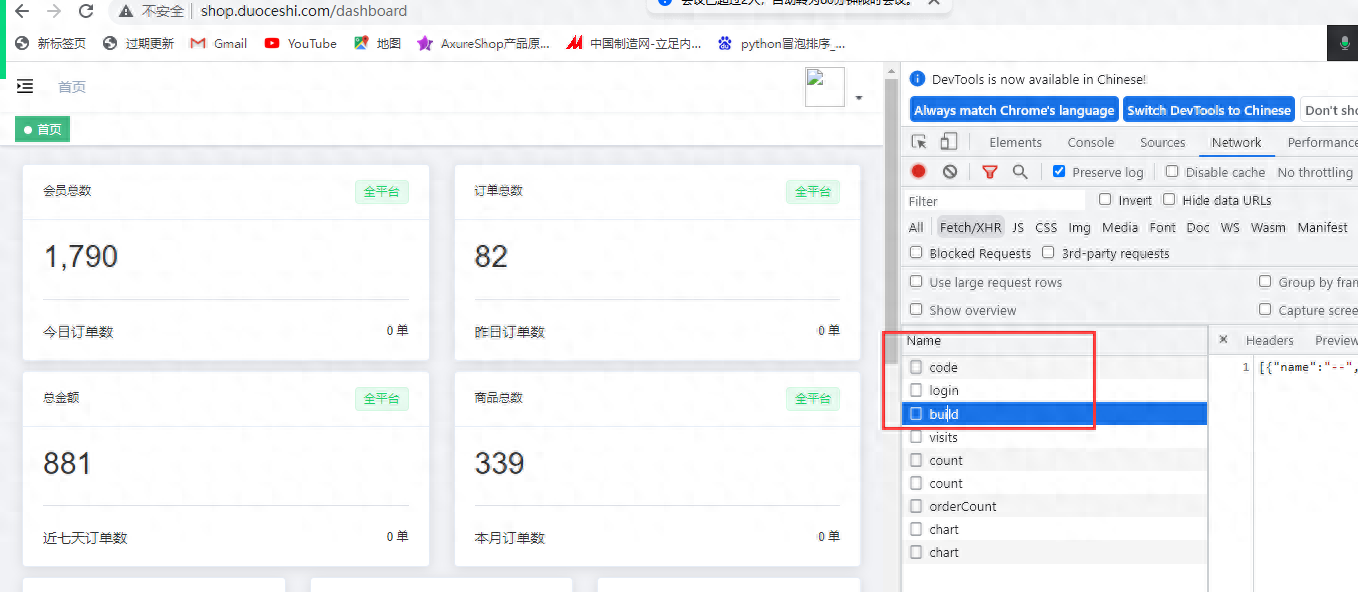
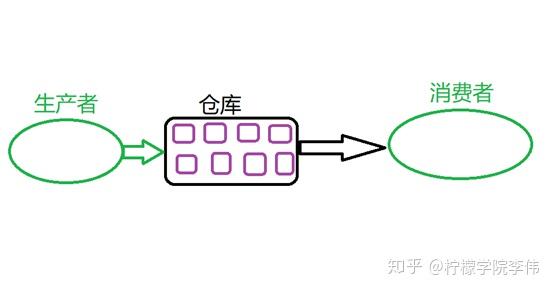
![[学习笔记]在不同项目中切换Node.js版本](https://img2024.cnblogs.com/blog/644861/202408/644861-20240822195107885-1416628331.png)
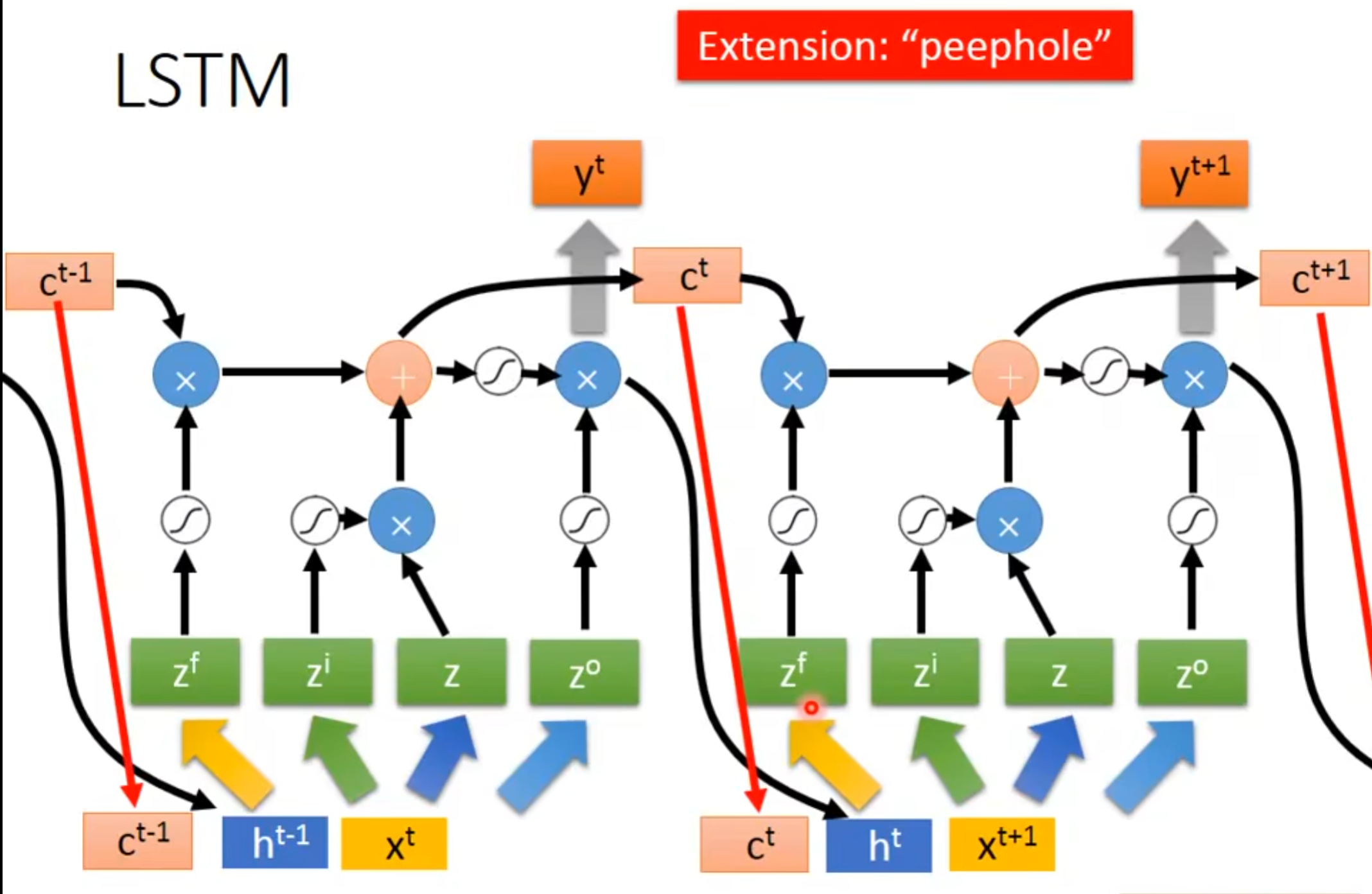
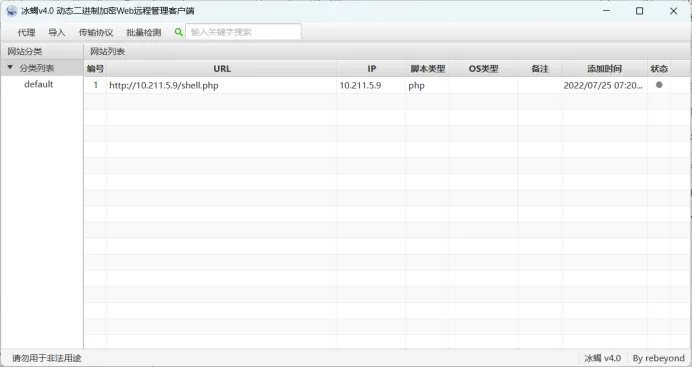
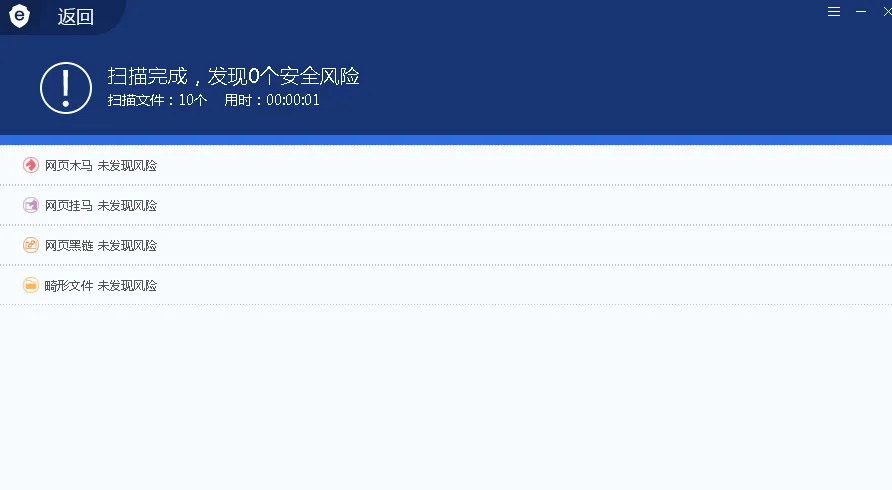

![[题解] permutation](https://img2024.cnblogs.com/blog/3358223/202408/3358223-20240822173225692-1958590634.png)

